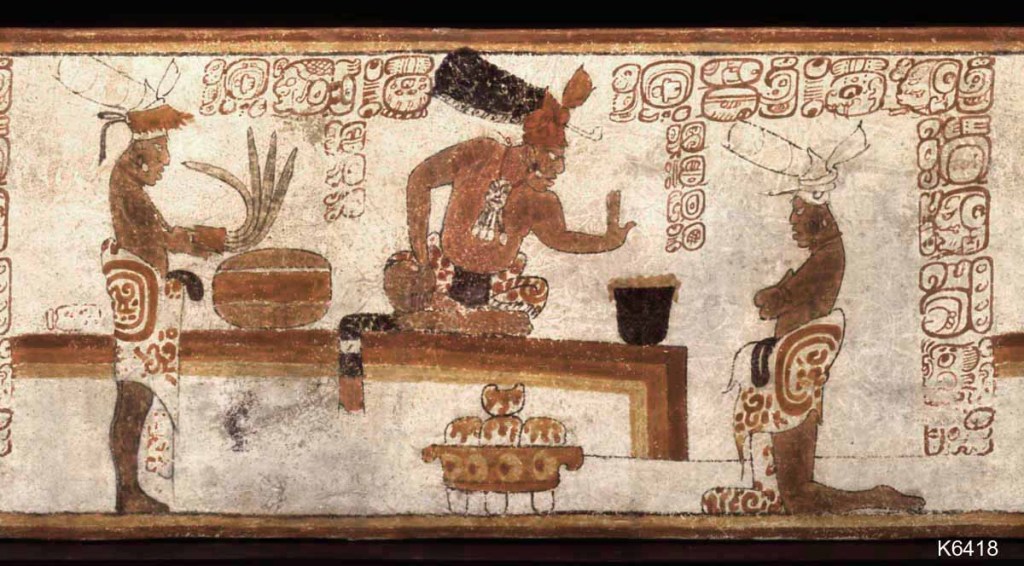We tend to think of
chocolate as a sweet candy created during modern times. But actually,
chocolate dates back to the ancient peoples of Mesoamerica who drank
chocolate as a bitter beverage.
For these people, chocolate wasn’t just a favorite food—it also played an important role in their religious and social lives.
The ancient Maya grew cacao and made it into a beverage.
For these people, chocolate wasn’t just a favorite food—it also played an important role in their religious and social lives.
The ancient Maya grew cacao and made it into a beverage.

The first people clearly known to have discovered the secret of cacao were the Classic Period Maya (250-900 C.E. [A.D.]). The Maya and their ancestors in Mesoamerica took the tree from the rainforest and grew it in their own backyards, where they harvested, fermented, roasted, and ground the seeds into a paste.
When mixed with water, chile peppers, cornmeal, and other ingredients, this paste made a frothy, spicy chocolate drink.
The Aztecs adopted cacao.
By 1400, the Aztec empire dominated a sizeable segment of Mesoamerica. The Aztecs traded with Maya and other peoples for cacao and often required that citizens and conquered peoples pay their tribute in cacao seeds—a form of Aztec money.
Like the earlier Maya, the Aztecs also consumed their bitter chocolate drink seasoned with spices—sugar was an agricultural product unavailable to the ancient Mesoamericans.
Drinking chocolate was an important part of Maya and Aztec life.
Many people in Classic Period Maya society could drink chocolate at least on occasion, although it was a particularly favored beverage for royalty. But in Aztec society, primarily rulers, priests, decorated soldiers, and honored merchants could partake of this sacred brew.
Chocolate also played a special role in both Maya and Aztec royal and religious events. Priests presented cacao seeds as offerings to the gods and served chocolate drinks during sacred ceremonies.




























